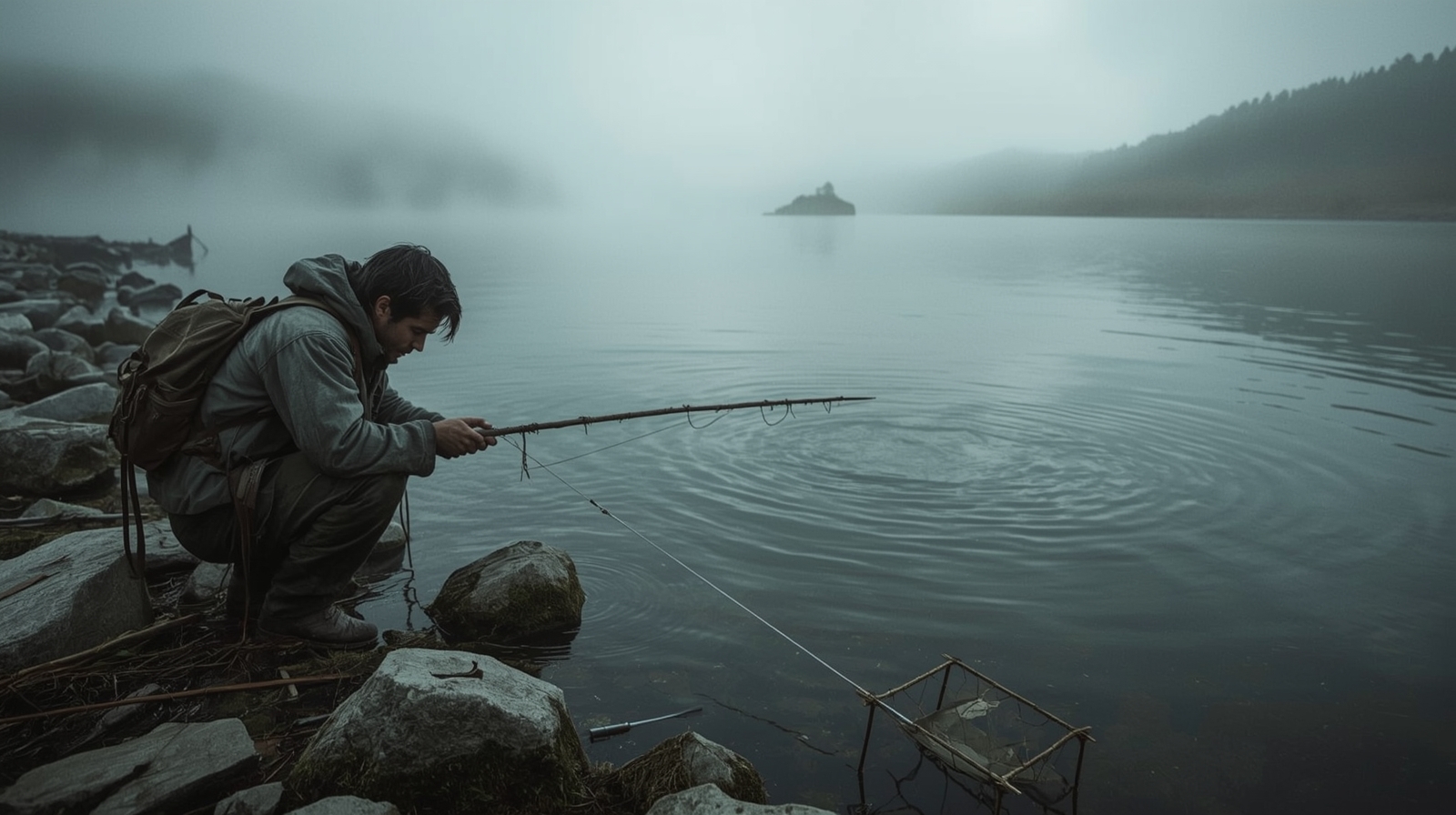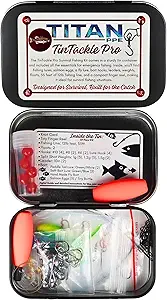Survival Fishing: Techniques and Tools for Procuring Food in the Wild

Survival Fishing: Techniques and Tools for Procuring Food in the Wild
Understanding the Basics of Survival Fishing
Why Survival Fishing Matters
Survival fishing is not just another way to fish; it’s a vital skill for obtaining food from aquatic resources when conventional sources are unavailable. This technique is especially crucial if you’re stranded or on extended outdoor adventures. It emphasizes simplicity and efficiency, focusing on minimal gear to catch fish.
Essential Tools for Survival Fishing
Survival fishing requires a range of tools, from a simple handline and hooks to sophisticated improvised traps. A well-prepared fishing kit should include:
- Hooks of various sizes
- Sinkers
- Swivels
- A sturdy line
These tools are adaptable to different environments and fish species, making them versatile for survival scenarios.
Hand Fishing Techniques
Hand fishing, or noodling, is a primitive yet effective method. It involves catching fish with your hands, often by feeling under rocks or along riverbanks. This technique demands:
- Patience
- Skill
- A good understanding of fish behavior and habitats
Selecting the Right Bait and Lures
Transitioning to bait selection, it’s crucial for survival fishing success.
Natural Baits
Natural baits are highly effective in survival situations. Using what’s available in your environment, such as insects, worms, and smaller fish, can attract a variety of species. Knowing the local fish diet is key to selecting the most effective bait.
Artificial Lures
Although not always available, having artificial lures can be beneficial. Lures that mimic prey can be particularly effective in clear water, where fish rely more on sight.
Improvising with Available Resources
Being able to improvise is a valuable skill in survival fishing. Items like pieces of cloth, shiny objects, or small food pieces can serve as bait. Creativity and experimentation are crucial in finding what works best.
Understanding Fish Behavior and Habitat
Moving on to understanding fish behavior and habitat, it’s essential to adapt your fishing strategy accordingly.
Freshwater vs. Saltwater Fishing
The approach to survival fishing varies significantly between freshwater and saltwater environments. Freshwater fish are often more abundant in confined spaces, while saltwater species may require different tactics.
Seasonal and Daily Patterns
Fish behavior changes with the seasons and even throughout the day. Fishing during early morning and late evening can be more productive, as fish are generally more active during these times.
Adapting to Environmental Changes
Being adaptable to environmental changes, such as weather and water temperature, is crucial. Ready to change tactics based on current conditions, you’ll be more likely to succeed in survival fishing.
Crafting Your Own Fishing Gear
In survival situations, being creative with what you have is essential.
Improvised Fishing Rods
A sturdy, flexible branch can serve as a makeshift fishing rod. Attach your line to one end, and you’ve created a simple yet effective tool.
Handmade Fish Hooks
You can create fish hooks from materials like wood, bone, or thorns. Although not as durable as manufactured hooks, they can be effective in a pinch.
Natural Fishing Lines
Plant fibers, vines, or strands of hair can be twisted together to form a makeshift fishing line. These materials may not be as strong as commercial lines but can catch smaller fish.
Setting Up Effective Traps
Passive traps can be a practical solution in survival situations.
Weir Traps
Weir traps use stones or branches to guide fish into a confined space. The narrow end of the “V” should face downstream, funneling fish towards a collection area.
Bottle Traps
Plastic bottles can be converted into fish traps. Cut the neck off, invert it, and place it back inside to create a funnel. Bait the inside to attract fish.
Gill Nets
A gill net, crafted from vines or thin branches, can catch fish as they swim through. While labor-intensive, its passive nature allows you to focus on other survival tasks.
Mastering the Art of Spearfishing
Spearfishing requires skill and patience.
Crafting a Spear
A long, straight stick, sharpened at one end, can be used as a spear. For greater effectiveness, split the end and spread the prongs apart.
Techniques and Timing
Successful spearfishing involves stealth and understanding light refraction in water. Patience is key; wait for the perfect moment to strike.
Safety Considerations
Always prioritize safety. Be mindful of your surroundings and ensure stable footing to avoid accidents.
Advanced Troubleshooting in Survival Fishing
Not every fishing attempt will be successful. Addressing common issues can improve your success rate.
Dealing with Broken or Lost Equipment
If you lose a hook or break your line, remember to improvise with available resources. Creativity is key in these situations.
Overcoming Unsuccessful Traps
If traps aren’t working, consider their placement and bait. Observing the environment and adjusting your setup can make a significant difference.
Expert Tips for Survival Fishing Success
Incorporating expert tips can further enhance your survival fishing skills.
Efficient Bait Use
Maximize your bait use by understanding local fish preferences. Parts of previously caught fish can also serve as effective bait.
Strategic Fishing Times
Align your fishing efforts with times when fish are most active, such as dawn and dusk. Observing the water’s surface can provide clues to the presence of predators.
Putting It All Together
Survival fishing requires patience, resourcefulness, and learning from the environment. Embrace the challenge and don’t get discouraged by setbacks. Each failure is an opportunity to learn and adapt.
Embrace Patience and Persistence
Success often comes down to patience and persistence. Conditions can change rapidly, so stay adaptable and keep trying.
Next Steps for Mastery
Continue practicing these techniques in various environments. Consider taking a survival fishing course or practicing with an experienced guide to deepen your knowledge and skills.
Recommended Product
TinTackle Pro – Compact Survival Fishing Kit with Mini Finger Reel |…

Price: 26.13 | Rating: ⭐ 4.8 out of 5 stars/5
Key Features:
- All-in-One Survival Kit – Packed with essential fishing gear, including hooks, lures, leaders, and weights, all neatly stored in a durable tin
- Designed & Packaged in the USA – Thoughtfully crafted with quality in mind, ensuring reliability when you need it most
- Compact Mini Reel – Includes a tiny finger reel for efficient and hassle-free fishing in emergency situations
